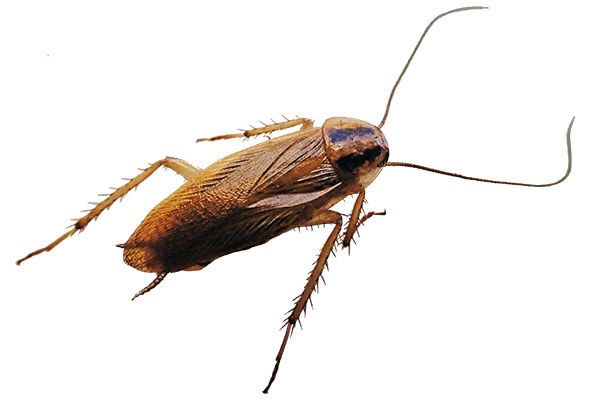- German cockroach control used to mean cleanouts, follow-up treatments and regular preventive services.
- The old techniques are still necessary to complete your cockroach portfolio.

We’ve gone from chasing Blattella germanica to letting it come to us, through the magic of baiting.
Photo: Mark Aheperdigian
Before the modern era of baiting, control for German cockroaches meant late-night cleanouts performed by a crew with sprayers, dusters, flushing agents, drills and extension cords. Working late into the night, the crew would move methodically through the facility. They flushed to find the roaches, and then dusted voids and sprayed appropriate surfaces. By the time they were done, there would be roaches flopping and flipping on the floor like so many fish.
A follow-up visit within the week would gauge the success and plot the path for the next go-round. If things went well, services would shift to monthly inspections and preventive treatments.
In spite of the crucial role of limiting food, water and harborage, a determined crew could still get the upper hand in kitchens with poor sanitation. For accounts that seemed otherwise hopeless, quarterly intensive treatments could maintain a surprising degree of control.
These labor-intensive services were expensive, but some accounts responded well to the high degree of attention and didn’t seem to mind the extra cost. While improved sanitation is always best, some companies can still make do on skill and determination.
The success of the program rested on the ability of the pest management professionals (PMPs) to seek out the active harborage and kill the roaches at their source. The cockroaches that escaped detection or found clean harborage would live — and so the chase was on. It was a game of pursuit.
Treatment evolution
While the old pros had turned such treatments into an art form, more consistent results could be obtained by adding a few important tools. Strategically placed insect monitors, for example, could quickly characterize the population. They indicate where to focus the search, track the infestation as it crashes and document conditions of zero cockroaches.
In the late 1980s, the advent of machines that could deliver ultra-low volume (ULV)-sized particles into voids through narrow cracks was a game changer. After several iterations and alterations, the equipment improved. In fact, a number of manufacturers still offer it for control of cockroaches and other pests.
About 30 years ago, insect growth regulators (IGRs) were brought to market for cockroaches. They can help short-circuit infestations that defied discovery, because even if you don’t kill the adults, preventing the next generation is pretty important.
When facing infestations of monstrous proportion, vacuums have been used to rapidly crash populations, reducing the time to control. It can be hard work, but a good vacuum in the hands of a skilled technicianis a force-multiplier.
Just when we were getting good at this, the baiting technology exploded onto the scene — and the paradigm once again shifted. Instead of chasing the cockroaches, we began applying baits and letting the cockroaches come to us.
In the 25 years or so since then, however, we have seen a general loss of the necessary skills to eradicate German cockroaches using contact insecticides alone. But there is a clear advantage in being able to deftly apply both systems: When a given cockroach won’t respond to baits, it is important to be able to take the next steps.
Contributor Mark Sheperdigian, BCE, can be reached at sheperdigian@rosepest.com.
Leave A Comment